For the use in a gas ex-zone, a customer from the pharmaceutical industry was looking for a solution that separates and classifies a pharmaceutical suspension into three fractions
The customer was already using several Engelsmann screening machines, so he also wanted to use screening technology for this task. The decision was made in favour of the JEL VibSpeed.
A suspension is a heterogeneous mixture of a liquid and a finely dispersed solid. There are various methods for separating suspensions, such as sedimentation. As a rule, centrifuges are used, which work much faster. Can the classification of suspensions on an industrial scale also be realised with sieving technology? Tests at the Engelsmann Technical Centre provide the answer.
It turns out that the standard version of the vibration screening machine cannot classify the suspension as desired. The problem: A large part of the liquid contained in the suspension flows off as soon as it hits the screen mesh. What remains is a viscous, moist screen cake that is difficult to convey over the mesh, let alone classify with a high degree of separation.
Adjustments are planned, further test series are carried out. In the end, however, the customer and the Engelmann project team are convinced that perfect screening results in the classification of suspensions can also be achieved with a vibration screening machine like the JEL VibSpeed. And so two vibration screening machines are built and delivered in a special design.
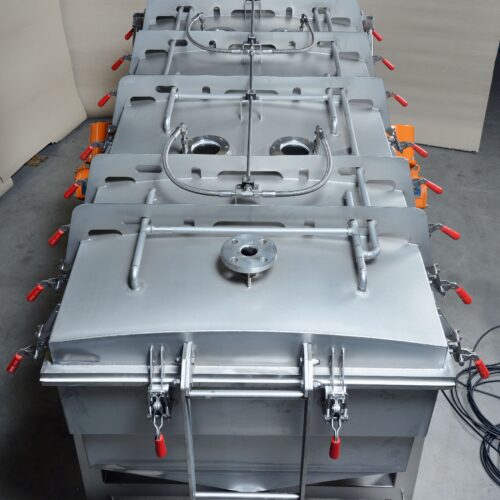
The JEL VibSpeed is used as a protective, control or classifying screen for free-flowing, dry bulk materials in the chemical, pharmaceutical and food industries.
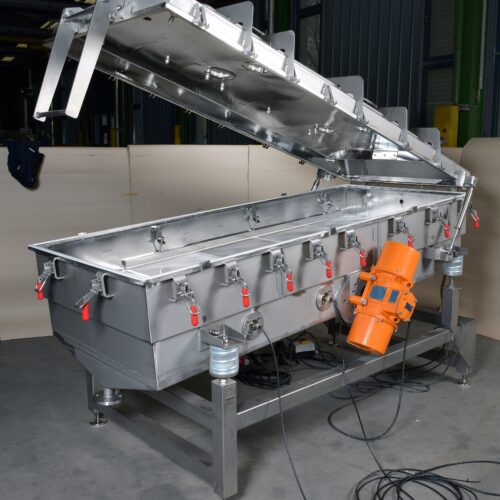
For the separation of suspensions, the standard was adapted to the customer’s requirements in order to also separate solid-liquid mixtures.
In order to keep the suspension permanently screenable, a product spraying system was integrated into the screening machine.
The vibration of the machine and additional ultrasonic cleaning thus keep the sieve inserts permanently free. This ensures high throughput, even for screenings with demanding properties.
In both JEL VibSpeed water circuits are installed. These dispense different amounts of water during the running classifying screening – depending on the specific task.
Nozzles are inserted in the lid of the vibrating screening machine which continuously wet the entire screening surface and the material to be screened with water during the screening process. This prevents the separated particles from caking on the screen feeder when the liquid components of the suspension have flowed off through the screen mesh. The product is kept free-flowing by the additional moisture and can be moved over the screen mesh. The result: a sharply classified suspension.
The three separately controllable water circuits make it possible to map six different operating settings that the user can choose between when classifying the suspension.
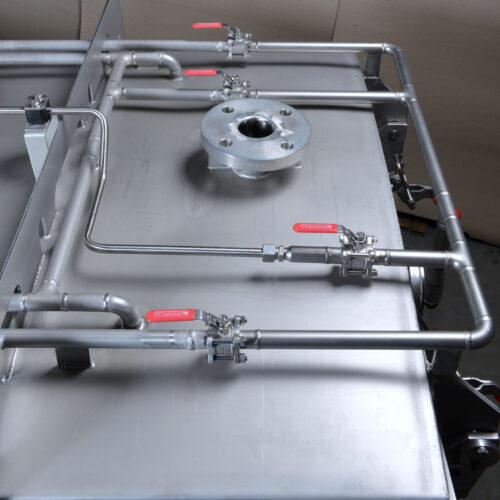
Different amounts of water are supplied via controllable water circuits.
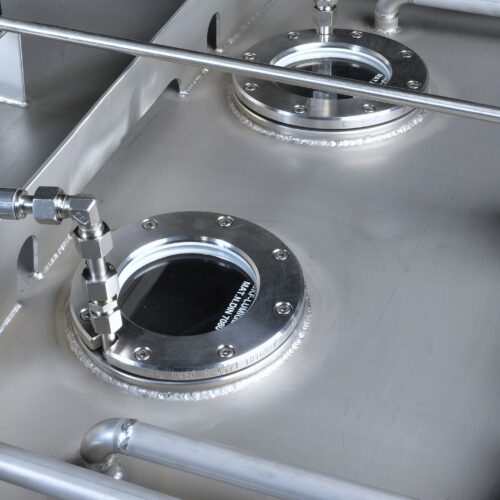
Viewing windows allow monitoring of the processes inside the screening machine.
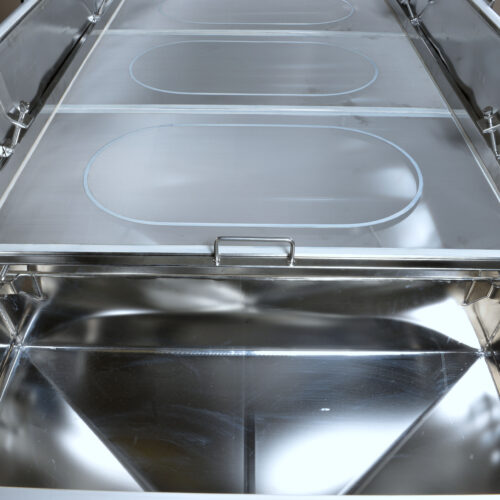
Gas-tight up to 20 mbar, including ultrasonic cleaning for Atex zone 1 (gas, inside and outside).
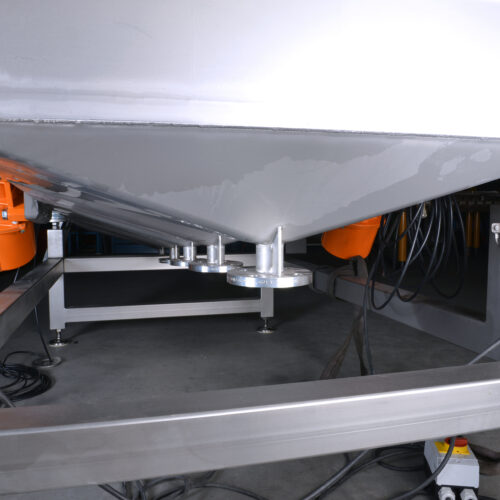
Outlets: After classification, the components of the suspension are separated according to a defined particle size spectrum.
The screening machines are cleaned every time the product is changed or the batch is changed. The sieve inserts must therefore be easily accessible and easy to change.
During operation, ultrasonic cleaning keeps the screen mesh free – even in gas-ex zones.
Since both JEL VibSpeed units are used by the operator in potentially explosive areas, they must be suitable for Atex zone 1 (gas, inside and outside) and temperature class T4. This requirement in particular shows how demanding the project is: ultrasonic cleaning is mainly only used in dust ex-zones.
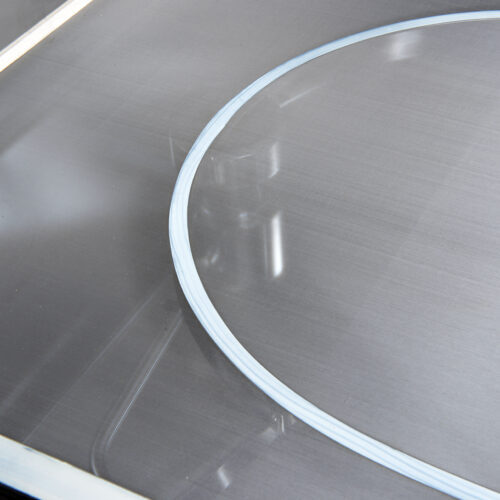
Up to grain sizes of 40 µm: ultrasonic cleaning keeps the screen mesh free – even in gas-ex-zones.
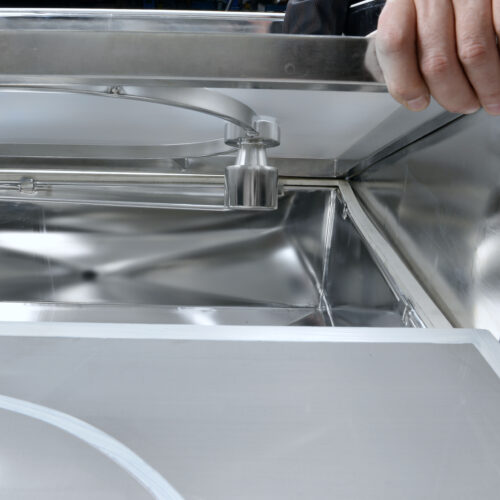
The screen insert with the ultrasonic cleaning system can be conveniently removed for cleaning the vibrating screen.
The handling of the vibration screening machine is simple and changing the sieve inserts is done quickly. After opening the cover and releasing the clamping device at the front, the operator can remove the sieve inserts upwards in a few easy steps.
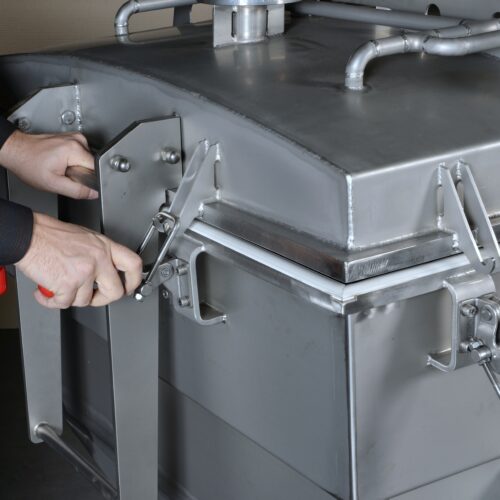
To change the sieve inserts, the quick-release clamps are loosened and the lightweight aluminium cover is folded open. Gas springs hold it securely in place.
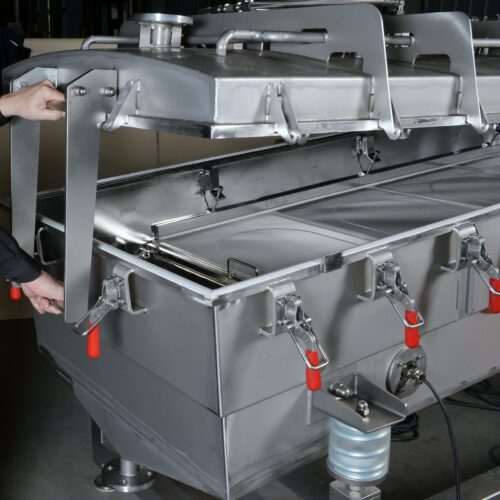
The sieve inserts are now freely accessible. Just loosen the pressure bars, then they can be replaced or cleaned individually.
With the CIP cleaning function (cleaning in place), the screening machine is cleaned directly at the installation site without having to be dismantled or transported away. For this purpose, additional cleaning nozzles are integrated in the cover and in the outlets of the screening machine, which can also be moved if necessary. Then the cleaning nozzles only protrude into the product space during cleaning and can be lowered again afterwards.
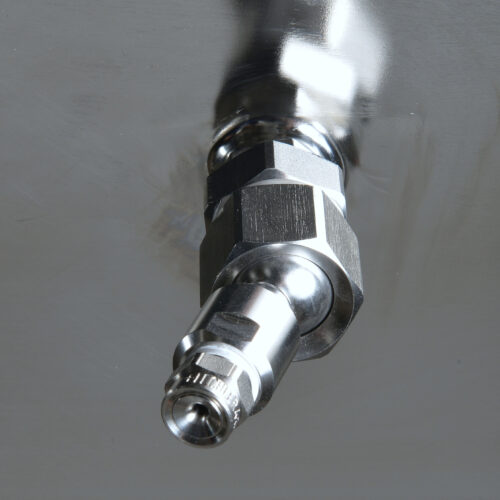
Cleaning systems – suitable for product and task. If required, also with CIP function.
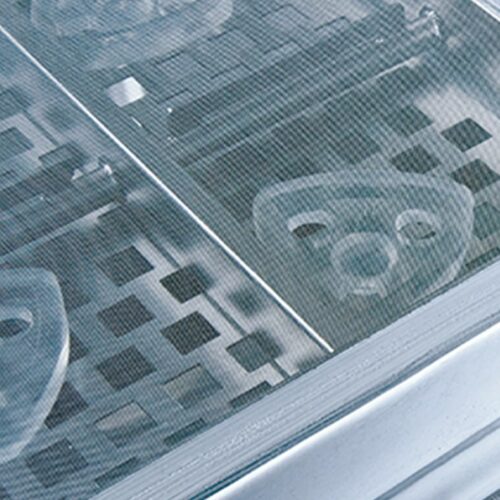
The JEL VibSpeed can also be equipped with triangular cleaning system.
The design of the screening machine, which requires little space due to its compact construction, allows the customer a high degree of flexibility. It can be quickly and easily adapted to changing requirements, e.g. different screening products. By using an adjustable screen inclination, the operator can change the inclination angle of the screen deck and thus influence the speed of the material to be screened or its dwell time on the screen mesh. In addition, the screen excitation can be modified and the screening machine can thus be further adapted to the product. The direction of the vibration is determined by the orientation of the vibration motors. Settings between 0° and 90° can be selected, at intervals of 15° each.
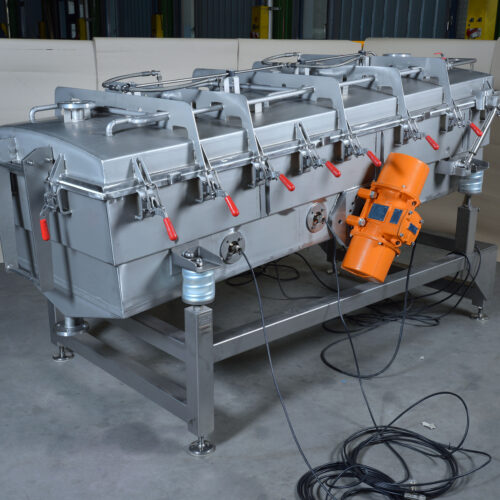
The JEL VibSpeed in special design: Compactly built, FDA and GMP compliant.
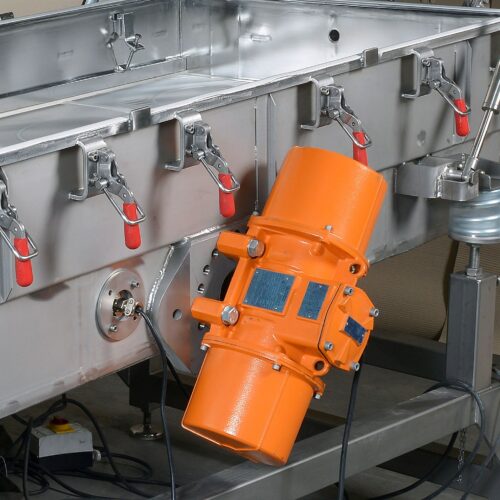
The sieve inclination and sieve movement can be modified in just a few steps.
The JEL VibSpeed series are available as standard up to a maximum screening surface of 7.5 m²: as a single- or double-deck version. For the single-deck version, the spectrum ranges from 0.24 to 3.75 m², for the double-deck version from 0.48 to 7.5 m². The vibratory screening machine is available with a stationary or mobile base frame. Depending on the size of the screening machine, the screen inserts have different widths from 250 mm to 1,250 mm, with a uniform length of 500 mm.
Decision facts
Separating solids from suspensions? This also works with vibration screening machines. The JEL VibSpeed achieves excellent results – even with highly demanding tasks, such as here in the pharmaceutical industry.
During the screening process, quantities of liquid are released that can be controlled with the aid of three separately adjustable circuits.
The cover of the screening machine is hinged. This reduces downtimes for set-up and assembly work during cleaning and maintenance.
The curved shape of the cover reduces the noise generated by the screening machine during operation.
Various screening systems – for adaptability to different bulk materials and screening tasks.
The impressive results of the two JEL VibSpeed in classifying the pharmaceutical suspension as well as the fast delivery time of 3 months – including installation and commissioning – were convincing: Shortly after the delivery of the two vibration screening machines, the client already ordered five more machines for the same task.

